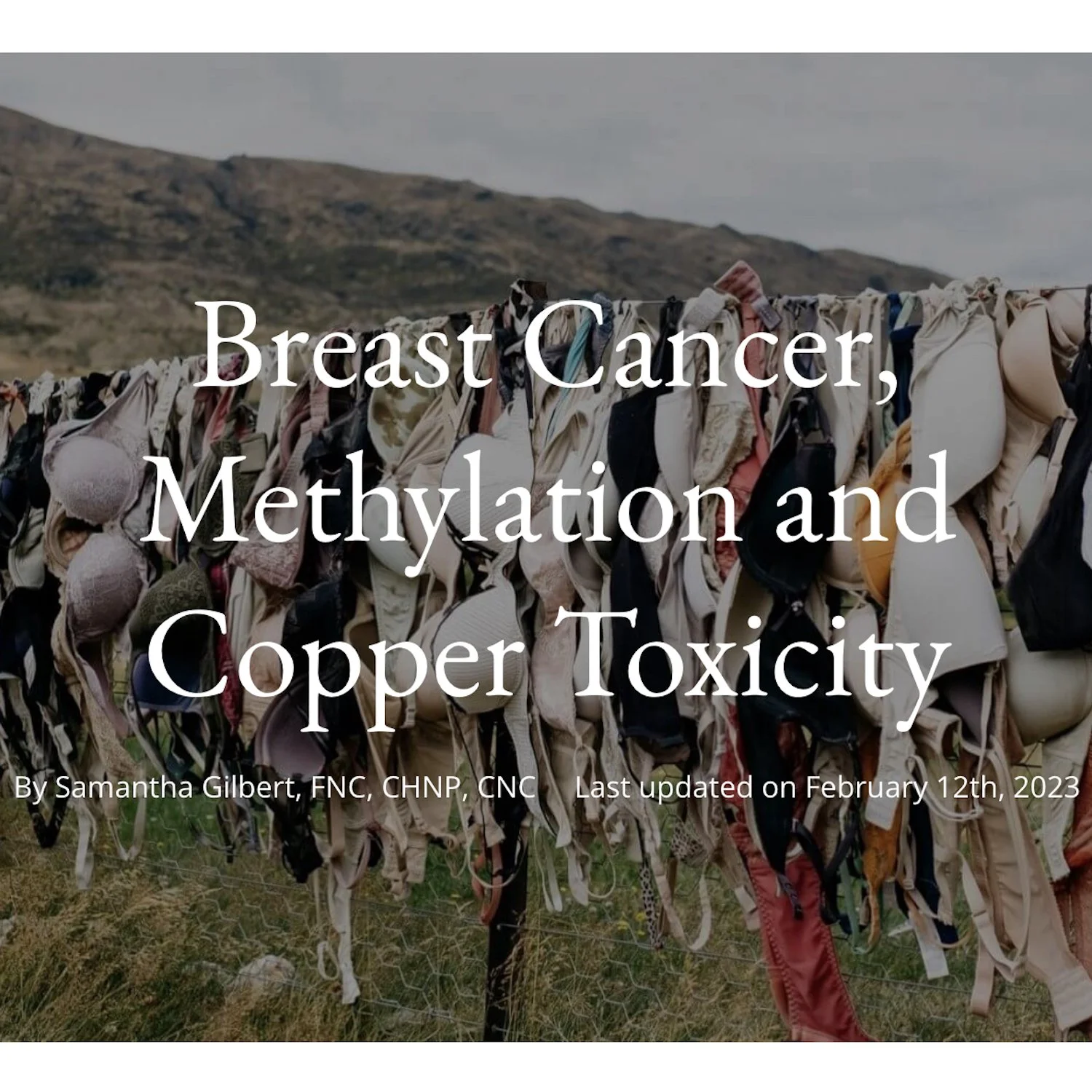Breast Cancer, Methylation and Copper Toxicity
/ Internet LinkBreast Cancer: Copper Toxicity and Estrogen Dominance/Sensitivity
“Simply put, copper toxicity, often hereditary, is an inability to effectively eliminate excess copper. It is not the same as Wilson’s Disease, a rare genetic disorder where copper accumulates in vital organs and glands.
This condition is becoming more and more common in women because estrogen increases copper retention in the body, and certain subtypes of breast cancer are estrogen sensitive. We live in an estrogen-dominant world, and it is well documented that estrogen dominance/sensitivity plays a direct role in the development of many cancers including those of the breast, ovaries, and cervix.
Copper toxicity is triggered by, and increases with, the use of birth control, hormone therapy (bioidentical and synthetic), tap and well water, copper pipes, xenoestrogens (toxins that mimic estrogen in the body), pesticides, plastics, fuels, dry cleaning chemicals, industrial waste, growth hormones from conventional feedlot animals, and many household and personal care products. The progression of these environmental triggers explains why copper toxicity is quite common today.
The popularity of plant-based diets (which are naturally high in copper) is also a contributing factor.
Anything that can elevate estrogen is a problem, including supplements and dietary sources. The most common culprits include oral contraceptives, the copper IUD, and hormone replacement therapy.
Common symptoms for this subtype of breast cancer patients include a history of severe PMS issues (especially irregular and painful menstrual cycles), fibromyalgia, chronic fatigue issues, ovarian cysts, endometriosis, PCOS, and chronic migraine headaches.
These same females may also speak of severe or lifelong depression, anxiety, panic attacks, mood dysregulation, postpartum depression and in some cases, postpartum psychosis.”








































March 6, 2023
Eat for Life Podcast